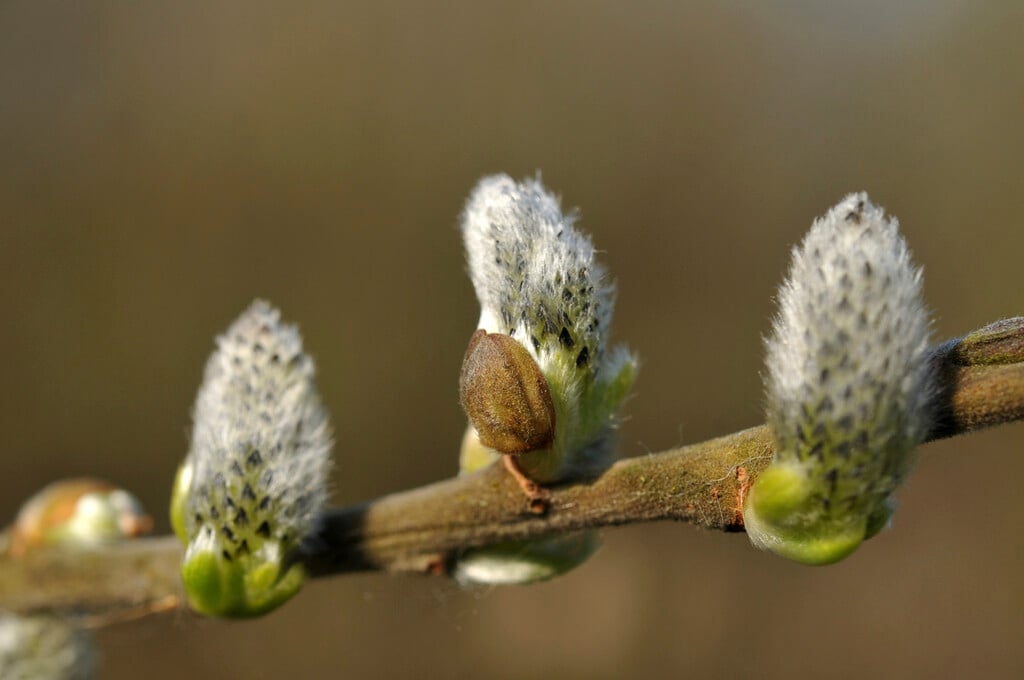Salix cinerea
grey willow
A large deciduous shrub, to around 5m high, with downy new shoots and grey bark. Leaves are long, oval and shallowly serrated at the edges, dull green or grey-green on top and softly hairy underneath. Catkins appear before the leaves in spring; male catkins are shorter and begin fluffy grey, turning yellow when ripe, while female catkins are longer and green
Synonyms
Salix timmiiSize
Ultimate height
4–8 metresTime to ultimate height
5–10 yearsUltimate spread
2.5–4 metresGrowing conditions
Moisture
Moist but well–drainedpH
Acid, Alkaline, NeutralColour & scent
| Stem | Flower | Foliage | Fruit | |
| Spring | Green Yellow White | Green Grey Silver | ||
|---|---|---|---|---|
| Summer | Green Grey Silver | |||
| Autumn | Green Grey Silver Yellow | |||
| Winter |
Position
- Full sun
Aspect
East–facing or South–facing or West–facing
Exposure
Exposed or Sheltered Hardiness
H7Botanical details
- Family
- Salicaceae
- Native to GB / Ireland
- Yes
- Foliage
- Deciduous
- Habit
- Bushy
- Genus
Salix are deciduous shrubs and trees of diverse habit, with simple leaves and tiny flowers in catkins, male and female usually on separate plants. Some are valued for their brightly coloured winter shoots, others for their foliage or showy male catkins
- Name status
Correct
- Plant range
- Europe, N Africa, SW Asia
How to grow
Cultivation
Grow in any deep, moist but well-drained soil in full sun. Avoid shallow chalk soil
Propagation
Propagate by softwood cuttings in early summer or hardwood cuttings in winter
Suggested planting locations and garden types
- City and courtyard gardens
- Coastal
- Cottage and informal garden
- Wildlife gardens
- Cut flowers
- Flower borders and beds
Pruning
Pruning group 7, every two or three years in March, for best show of catkins
Pests
May be susceptible to aphids, caterpillars, willow leaf beetle, sawflies and willow scale insects
Diseases
May be susceptible to willow anthracnose, honey fungus and rust diseases
Get involved
The Royal Horticultural Society is the UK’s leading gardening charity. We aim to enrich everyone’s life through plants, and make the UK a greener and more beautiful place.
